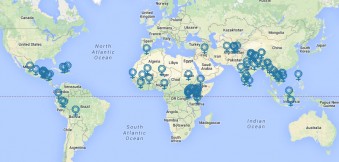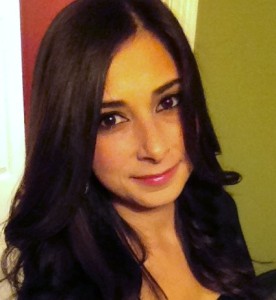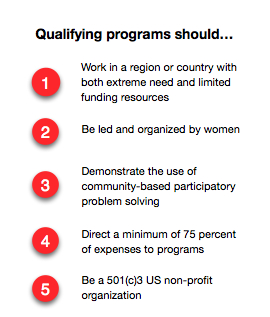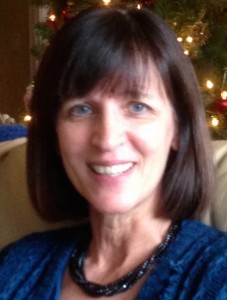
Program Selection: Inspiration revealed through perspiration
How does Dining for Women select its featured programs? It’s a strenuous and stringent process that requires a remarkable commitment by the volunteers who take it on. Take a walk through the process with Dr. Maggie Aziz, program director. By Barb Collins
Co-founder and board chair Selecting vibrant, sustainable, transformational programs is the most important thing that Dining for Women does. Our collective donations have funded nearly 100 grantee organizations. With most still operating, it seems we have excelled in our method of selection. Recently, the publicity surrounding Somaly Mam, a 2010 featured program, has highlighted the pitfalls of “bright, shiny object” syndrome. That is when we are so taken with the power of an individual that it overshadows everything else and an organization thrives solely on the vibrancy of its leader.

“Our process is really pretty stringent,” Dr. Aziz notes, “and our defined criteria is what grant makers are supposed to be asking for.” The “behind the scenes” work of the Program Selection Team is remarkable and embodies our cultural values of collaboration, education, inspiration, and transformation. The team is a group of 10-12 volunteers around the country. They agree to serve two-year terms and commit to a demanding process that runs up over 100 hours per year. These individuals meet background and experience criteria, developed by Dr. Aziz, that help them effectively and efficiently evaluate programs.
“They are bright and intelligent people with backgrounds in areas that are critical to program evaluations,” Dr. Aziz says. They are professors, lawyers, doctors and other medical personnel, international non-profit managers or employees, professionals with other grant-making organizations. Twice a year, DFW accepts Letters of Intent from qualifying organizations. Generally, we receive between 90 and 100 complete LOIs. Dr. Aziz manages a first pass, culling out those who clearly don’t meet guidelines or who have not provided the appropriate information.

Then the real work begins with this final group being invited to submit a full grant proposal. This is a lengthy and involved document — the final package can often be in excess of 40 pages. A great deal of focused effort is on reviewing and assessing the financial position of the organization.
Dining for Women wants to lay groundwork for the future with organizations that are sustainable and can continue to grow and impact their communities. For the final selection, every member of the team reviews and scores every application. Although much of the scoring is numeric, the process allows for a gut feeling to have a place, but “emotions should never be a deciding factor,” according to Dr. Aziz. This is how we can take into account the dynamism of a leader but are not permitted to make it the overriding factor in our decisions.
“Back-breaking, mind-numbing deliberation,” is how Dr. Aziz describes the marathon the program selection team members endure for final selection. “But it is very respectful.” Eventually, over three days of deliberation (the team members must pay their own way to the meeting — usually held in Chicago — and their own hotel accommodations) the six featured programs and two alternates are chosen. These programs are presented to the Board of Directors for its approval.
Many factors go into final deliberations. The team attempts to strike a balance during each cycle of programs working in different impact areas and in different regions of the world. “My team is wonderful,” says Dr. Aziz. “They always put the members first. They know what will excite the members and also want to expand the members’ knowledge of challenges in the world.” It is a remarkable commitment of time and effort that has helped us consistently identify and fund transformational and inspirational programs that are having a profound impact in the world.
Thank you to all the members of the Program Selection Team who selflessly give of their time and expertise to this integral function. They are: Jennet Sambour, Corinne Blakemore, Janine Baumgartner, Sarabeth Harrelson, Karen O’Brien, Melanie Sanzone Torres, Susan Malick, Harriet Dichter, Jada Tullos Anderson, Susan Garrity, and Stephanie Kelly.

About the author
Barb Collins is the co-founder and current board chair of Dining for Women. She has 30 years of experience in non-profit management and board development. Barb’s work with Dining for Women has been fueled by a desire to do something “impactful” with her life and her skills.
